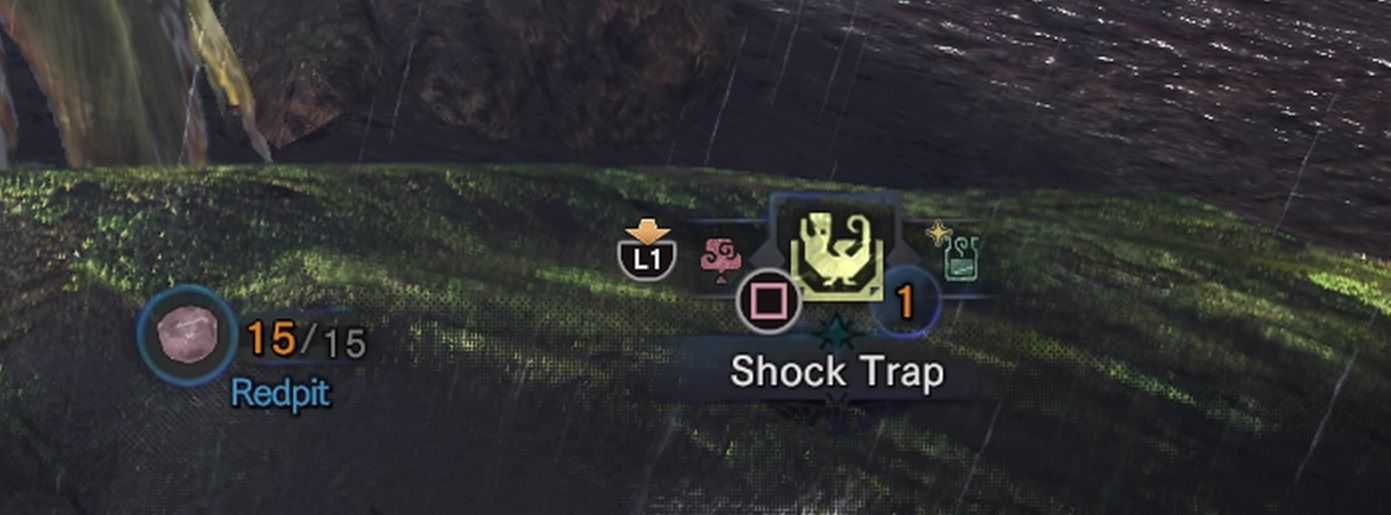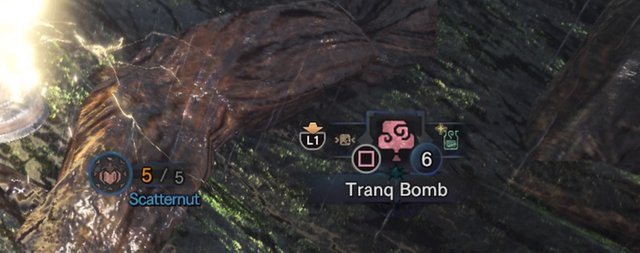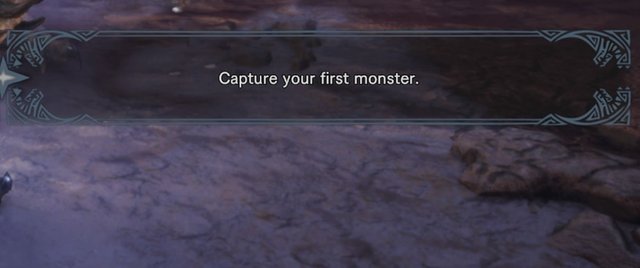One of the more complicated mechanics introduced early in Monster Hunter: World is the ability to capture monsters instead of slaying them. Any monster can be captured in any mission, as long as that monster is not an Elder Dragon, and the mission objective is to hunt/capture the monster, rather than explicitly slay it.
There are two components to a successful capture: trapping the monster and tranquilizing the monster. But the tricky part comes from knowing exactly when to trap a monster, where to trap it, and how to capture it.
All About Traps
There are two traps in the game: the shock trap and the pitfall trap. A hunter can carry one of each at a time, together with any traps that the guild provides on missions (these are prefixed with EZ, i.e. EZ Shock Trap, and are available from the supply box during certain quests). Shock traps and pitfall traps currently work for any non-Elder Dragon monster, although there were exceptions in the past. While shock traps temporarily paralyze a monster, pitfall traps trap them in a hole, often obscuring the monster's tail, giving you slightly more time to tranquilize them/attack them, but hiding the lower portion of their body.

Shock traps are crafted with trap tools (available from the provisions market in Astera early on), and thunderbugs, which can easily be found in every map in the game. They can also be requisitioned from the botanists in Astera, harvested from the Ancient Tree sapling (unlocked through story quests).
Pitfall traps are crafted through a combination of trap tools and nets. Nets are made with spider webs and ivy, both of which can be found in the Ancient Forest and Wildspire Waste. Spider webs are hidden in small passageways throughout various maps, close to a vapornid (giant yellow spiders). Capture the vapornid with your capture net to add it to your collection of pets, and harvest the sticky web behind it. Ivy can be found hanging nearby the ivy hunters use to climb up walls. It's easily found around the Ancient Forest camp near the Rathalos nest.
Traps are not just useful for capturing. Like status effects such as sleep and paralysis, they give you a small window to deal more damage to the monster by keeping them immobilized. However, traps lose effectiveness the more you use them, and you can usually only hold 4 at a time (One pre-made shock trap, one pre-made pitfall trap, and two trap tools with materials to craft more traps). If you have a four-man team, that makes for a total of sixteen traps, easily allowing you to completely immobilize a monster for most of the hunt in combination with status weapons and bombs.
Given the massive material cost and the inability to trap the game's most challenging monsters (elder dragons), it's typically not worth the trouble. Do keep in mind, however, that if you're having a lot of trouble with a certain monster, you have the option of trapping it a few times.
Tranq Bombs
So, you've laid down your trap, ensnared the monster/paralyzed it, and now it's time to actually get it to go to sleep. But wait - where are your tranq bombs?

Tranq bombs are provided in every capture hunt as EZ Tranq Bombs in the supply box, but can also be crafted if you ever want to trap a monster in regular hunts. They're made from sleep herbs and parashrooms, both of which are available in the Ancient Forest and in the Wildspire Waste. Simply keep a look-out for them, especially near Pukei-Pukei's hideout, and on the way up to Rathalos' nest. You need to hit a monster with two tranq bombs to trigger the capture. Not one, not three or more. Just two.
The final touch to capturing a monster is making sure it's ready to be captured. You cannot just jump into a quest, lay down a trap, and slam a few tranq bombs. First, you have to prepare the monster - with a massive beating.
A monster's health value is hidden in Monster Hunter, but you can tell how far along a hunt you are by the frequency of a monster's enraged state, their exhaustion, and limping. A monster will hurriedly limp away from you when it has reached a critical health state - checking your minimap when a monster isn't enraged will show you a little skull over their minimap icon to indicate that they are ready for capture. In previous games, you had to equip a special armor skill to make this blatantly visible, or simply slow down your assault and give the AI the option to snap out of rage and go on to limping.
![]()
A safe way to ensure a capture is to follow a limping monster back to its lair, where it will go to sleep, allowing you to trap it and throw down your tranqs.
The Order Doesn't Matter
The one thing about trapping new hunters are guaranteed not to know is that the monster needs to be trapped, tranqed, and limping - but not necessarily in that order.
For example, you can tranq a monster towards the end of a fight, if you feel like they are getting close to limping, and then proceed to lure them into a trap. If their HP has already been lowered enough without them trying to get away, they might immediately get captured upon hitting the trap. Otherwise, this gives you the opportunity to wail at them with your biggest attacks for a few seconds, potentially hitting that HP threshold that tips the scales and gets them captured.

Fight the monster. Get close to them and tranq them twice. Get them in a trap, and unleash your biggest damage-dealing combo. Soon, you'll be a capture master.
Don't Go Ham
Nothing is worse than being on a capture quest, and then accidentally killing the monster. It is a massive waste of time and one that was caused not by struggling with a monster but because of simply not paying attention or taking advantage of a flinch-fest.
Attack the monster, but watch out for its mouth. When a monster is near its critical HP state, they tend to get very tired, causing them to slow down, give bigger openings, and occasionally trip before going back into an enraged state. When this is happening and you have a big damage combo lined up, it may be worth it to tone down your assault.
Two things clearly indicate a monster is close to death: limping and exhaustion. Learn to watch out for both. Take note that weapons that inflict a lot of exhaust damage (impact phial charge blade, hammer, and hunting horn) will tire a monster out faster, so it is more reliable to gauge a monster's health by the rate at which they are tripping and going in and out of rage.